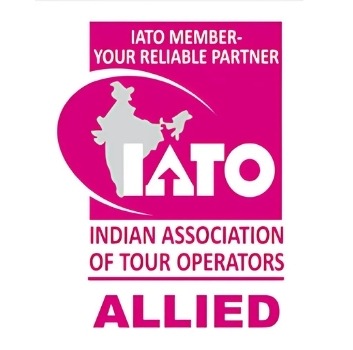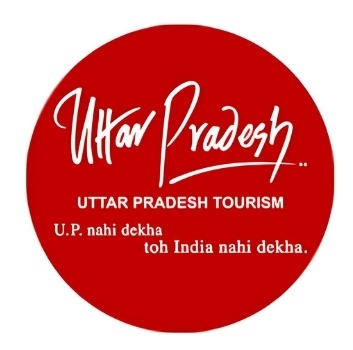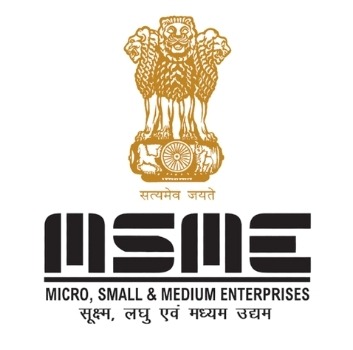Nights –
Days
Embark on the ultimate journey through India’s most iconic destinations—Delhi, Agra, Jaipur—while experiencing the untamed beauty of Ranthambore National Park. Witness the majestic Taj Mahal, explore Jaipur's regal forts, and delve into Delhi’s vibrant heritage, before discovering the thrill of Ranthambore’s wild jungles, home to the famous Bengal tigers. This tour perfectly blends history, culture, and wildlife for an unforgettable Indian adventure.
On arrival by International flight, after traditional Welcome our representative would assist you at airport & transfer to hotel for check in. Overnight Hotel
Morning: After breakfast, visit Old Delhi, the 17th-century walled city of Shah Jahanabad. Begin with the great Jama Masjid, the principal mosque of Old Delhi, built in 1656 AD by Mughal Emperor Shah Jahan. It is the largest and best-known mosque in India.
Later, walk through Chandni Chowk, the old marketplace of Shah Jahanabad, now a picturesque bazaar, to reach the Red Fort, built in 1648 by Shah Jahan.
Afternoon: Explore New Delhi with a city tour. Start with Raj Ghat, a memorial to the Father of the Nation, Mahatma Gandhi, marked by a simple black marble platform at the spot of his cremation on 31 January 1948.
Visit Humayun's Tomb, a memorial to Mughal Emperor Humayun, built in 1562. This complex, a UNESCO World Heritage Site, is the first example of this type of Mughal architecture in India.
Continue to the iconic Qutub Minar, built in 1206 by Qutub-ud-din Aibek. Standing at 72 meters, it is the tallest brick minaret in the world and an important example of Indo-Islamic Architecture. The Qutub Minar complex is also listed as a UNESCO World Heritage Site.
Overnight: Stay at the hotel.
Morning: After breakfast, visit Old Delhi, the 17th-century walled city of Shah Jahanabad. Begin with the great Jama Masjid, the principal mosque of Old Delhi, built in 1656 AD by Mughal Emperor Shah Jahan. It is the largest and best-known mosque in India.
Later, walk through Chandni Chowk, the old marketplace of Shah Jahanabad, now a picturesque bazaar, to reach the Red Fort, built in 1648 by Shah Jahan.
Afternoon: Explore New Delhi with a city tour. Start with Raj Ghat, a memorial to the Father of the Nation, Mahatma Gandhi, marked by a simple black marble platform at the spot of his cremation on 31 January 1948.
Visit Humayun's Tomb, a memorial to Mughal Emperor Humayun, built in 1562. This complex, a UNESCO World Heritage Site, is the first example of this type of Mughal architecture in India.
Continue to the iconic Qutub Minar, built in 1206 by Qutub-ud-din Aibek. Standing at 72 meters, it is the tallest brick minaret in the world and an important example of Indo-Islamic Architecture. The Qutub Minar complex is also listed as a UNESCO World Heritage Site.
Overnight: Stay at the hotel.
Morning: After breakfast, begin the journey to Jaipur, popularly known as the Pink City—the flamboyant and colorful capital of Rajasthan.
With its rich and vibrant past, resplendent with tales of valor and bravery, Jaipur has grown to be one of the most important heritage cities in India. The city was founded in 1728 by Maharaja Sawai Jai Singh II, the ruler of Amber.
Jaipur is unique in being the only city in the world to symbolize the nine divisions of the universe, represented through its nine rectangular sectors.
Overnight: Stay at the hotel.
Today, take an excursion to Amber Fort, a majestic palace complex initiated during the reign of Raja Man Singh. Experience the thrill of an elephant ride to reach the fort atop the hill—an unforgettable adventure!
Later, visit the City Palace, an exquisite blend of Rajasthani and Mughal architecture. At the heart of the palace lies the seven-storied Chandra Palace, offering stunning views of the gardens and the city.
Explore Nawab Sahib Ki Haveli, followed by a visit to Jantar Mantar (Solar Observatory), an extraordinary treasure house of astronomy featuring solar devices that continue to provide accurate predictions even today.
Conclude with a visit to Hawa Mahal (Palace of Winds), a remarkable five-storied structure made of pink sandstone, built in 1799. Designed for veiled royal women, its 593 intricately carved stone Jharokas (mini windows) allowed them to observe the bustling street below without being seen.
Overnight: Stay at the hotel.
On the 4th day of the tour, adventure awaits as you reach the renowned Ranthambore National Park, bounded to the north by the Banas River and to the south by the Chambal River. The park is named after the historic Ranthambore Fortress, which lies within its boundaries.
The park was established as the Sawai Madhopur Game Sanctuary in 1955 by the Indian Government and was later declared a Project Tiger Reserve in 1973. It became a National Park in 1980, and in 1991, the tiger reserve was expanded to include the Sawai Man Singh and Keladevi Sanctuaries, covering a total area of 1,334 km².
Ranthambore is famed for its tiger population and is one of India's prominent Project Tiger Reserves. Other major wildlife in the park includes leopards, Nilgai, dholes, wild pigs, Sambar deer, chital, and gaur. The park is also home to a rich variety of trees, plants, birds, and reptiles.
Evening: Embark on an exciting Jeep Safari to try your luck in spotting the majestic tigers in their natural habitat.
Overnight: Stay at the hotel.
Morning: Begin the day early with a wildlife safari at Ranthambore National Park. Embark on a thrilling Jeep Safari to the Tiger Reserve, where the park’s restoration under Project Tiger has brought back much of its natural beauty and dry deciduous forest.
Later in the day: Visit the historic Ranthambore Fort, founded in 944 AD by the Chauhan Rajputs. After the defeat of the Chauhan king Prithviraj III by Muhammad of Ghori in 1192, the fort came under Govinda Raja, grandson of Prithviraj, and became the center of Chauhan resistance against the expanding Sultanate of Delhi.
Following several battles and changes in rulers, the fort was acquired by Mughal Emperor Akbar in 1559. Later, in the 17th century, it passed to the Kachhawa Maharajas of Jaipur and remained part of Jaipur state until Indian Independence. The area surrounding the fortress also served as a hunting ground for the Maharajas of Jaipur.
Overnight: Stay at the hotel.
Today: Drive to Agra, with stops en route at Abhaneri Village and Fatehpur Sikri (Ghost Capital).
Begin the journey by visiting Abhaneri Village, known for its famous stepwell and ancient architecture.
Later, explore Fatehpur Sikri, the political capital of India’s Mughal Empire under Akbar’s reign from 1571 to 1585. Fatehpur Sikri was abandoned due to a lack of water, but its legacy remains intact. Visit Emperor Akbar’s Residential Complex, the Mosque, and the Tomb of Salim Chisti during your excursion.
Continue the journey to Agra, beautifully situated on the banks of the River Yamuna. Agra gained prominence as the capital of the Mughal Emperors from 1526 to 1628. Today, it stands as a major tourist destination for its splendid Mughal-era monuments, most notably the Taj Mahal, Agra Fort, and Fatehpur Sikri, all recognized as UNESCO World Heritage sites.
Overnight: Stay at the hotel.
After breakfast day at leisure, Afternoon check out and transfer to airport for onward journey.
➤ 08 Nights Hotel accommodation
➤ 01 Double/Twin Room with Breakfast at all Hotels
➤ Traditional welcome on arrival at Airport
➤ Personal Assistance on arrival and Departure
➤ Airport pickup drop and sightseeing by AC Swift Dzire Car
➤ Rickshaw ride on dunes
➤ Spice Market visit in Old Delhi
➤ Elephant ride / Jeep ride in Amber Fort
➤ English Speaking Guide
➤ 02 Time sharing jeep safari at Ranthambore National Park
➤ Battery van ride in Agra
➤ Fuel, toll, parking fee and driver allowance
➤ 02 Bottle Mineral water per person per Day
➤ All Taxes
➤ International Flight
➤ Lunch & Dinner
➤ Monument Fee as per Itinerary
➤ Any Other activities not mentioned in Itinerary
➤ Laundry, Portages, Liquor, Tips
➤ Anything not included in the Cost Includes section
➤ Tip to Driver will be Extra
➤ Any other expenses due to political, Act of nature, or any other reason which are beyond control
The Indian Splendour is a luxurious journey that showcases India’s royal heritage, vibrant culture, and breathtaking landscapes. This tour, often associated with the Maharajas’ Express, takes travelers through iconic destinations like Delhi, Agra, Ranthambore, Jaipur, Bikaner, Jodhpur, Udaipur, and Mumbai.
The Heritage of India Tour explores Mumbai, Udaipur, Jodhpur, Bikaner, Jaipur, Ranthambore, Agra, and Delhi, blending royal grandeur, architectural marvels, and cultural richness for an unforgettable experience. Let me know if you’d like any refinements!
Treasures of India is a journey through the country’s rich heritage, vibrant culture, and timeless wonders. From majestic forts and opulent palaces to sacred temples and bustling bazaars, this tour unveils the hidden gems that define India’s grandeur. Explore the architectural brilliance of Rajasthan, the artistic legacy of Khajuraho, the spiritual aura of Varanasi, and the historical charm of Delhi and Agra.










Incredible India Journeys: Where dreams meet dazzling discoveries. We’re your one-stop shop for crafting unforgettable Indian adventures, from the snow-capped Himalayas to the sun-kissed beaches of Goa.






WhatsApp us